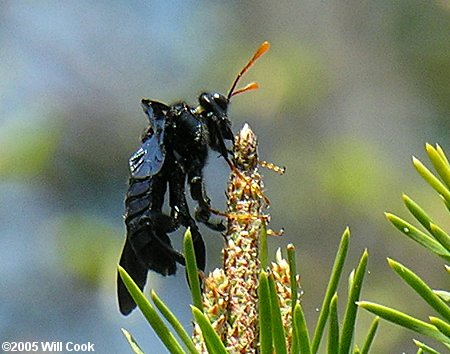
Interactions With Other Species
Many species of wasps and flies feed on sawfly eggs. The larvae and cocoons that are found at the base of the tree are commonly eaten by small mammals, such as the white-footed mouse (Peromyscus leucopus), the deer mouse (Peromyscus maniculatus), the shorttailed shrew (Blarina brevicauda), and the masked shrew (Sorex cinereus). To help fend off parasites and predators, sawfly larvae make use of chemical defenses, ejecting fluids from glands near spiracles. Sawflies do not feed on other smaller insects because they are herbivores, eating leaves in the larval stage and sap and other nutrients from the limbs of trees as adults (U.S. Department of Agriculture 1974).
Disease cases reported affecting humans have been rare; however, the pathogens Bacillus cereus and Fusarium sp. have been identified from larvae (U.S. Department of Agriculture 1974).
The sawfly also significantly affects the trees it interacts with. Adult sawflies use their mandibles to break through tree bark. Constant slicing into the bark eventually causes damage to the trees, and sometimes even girdling and death of the limbs. The larvae stage causes defoliation primarily of elm and willow trees (Borror et al. 1989).
